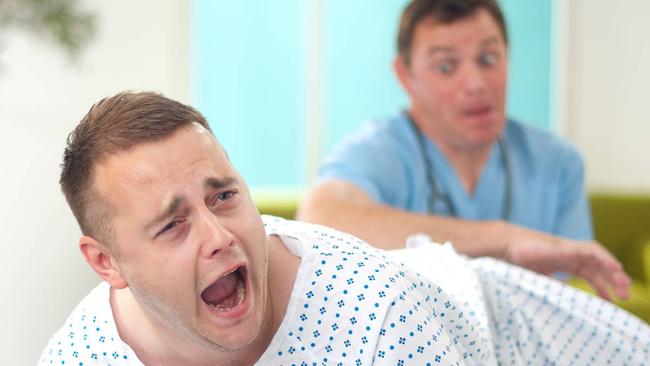Criterion: Healthscope’s collapse puts private hospitals in a world of pain
The collapse of Healthscope highlights the headwinds faced by the private hospital sector, including listed exponent Ramsay Health Care.

Stockhead
Don't miss out on the headlines from Stockhead. Followed categories will be added to My News.
The unlisted Healthscope’s misfortune casts the spotlight on the listed Ramsay Health Care
Private hospital profitability has shrunk, but the sector still accounts for more than 40% of admissions
Ramsay’s rehab includes putting its loss-making French business up for sale
Private hospital operator Healthscope’s lapse into administration this week highlights the role sector’s financial woes that have been brewing for years – along with that of the private equity owner’s excessive debt.
As the country’s second biggest hospital operator, the unlisted Healthscope is a case of ‘too big to fail’. The operating business is expected to be sold and recapitalised, with lenders and landlords taking a suitable haircut.
Notably, the Commonwealth Bank (ASX:CBA) was comfortable enough to extend a $100 million loan to keep the wards ticking over across Healthscope’s 37 hospitals.
But the structural pressures will remain, with private insurance payors not adequately compensating the hospitals for ratcheting costs (notably wages).
The insurers, in turn, are being squeezed by the government’s control over premium increases.
At the same time, medical advances mean more procedures are done via day surgery, which is less lucrative.
The private hospital sector should have much going for it, given the ageing populace and the pressures on the public hospitals.
According to the Australian Private Hospitals Association, the ‘privates’ accounted for 41.2% of all hospital admissions in the 2022-23 year, a gain on the pre-pandemic 40.3% share in 2018-19.
They also account for 705 of elective procedures.
Global expansion puts Ramsay in the sick bay
Healthscope was listed until 2019, when it was purchased by private equity. That leaves Ramsay Health Care (ASX:RHC) , the country’s biggest operator, as the only ASX-listed exponent.
Ramsay owns or operates 76 hospitals and clinics locally, as well as 34 in the UK and 244 in Europe.
In a misguided expansion, Ramsay acquired just over half of French group Ramsay Sante – the crux of its European ops – for around $140 million in 2010.
Sante means 'good health' but there hasn't been much of that.
In early 2022 Ramsay then acquired Elysium, which runs mental health and rehabilitation facilities in the UK, for $1.5 billion.
The French and UK hospitals face similar headwinds to the local sector – probably more so given the reliance on governments that have been equally stingy with keeping up with cost inflation.
As a result, Ramsay’s overseas operations have performed worse than its local ones, resulting in the board’s decision to find a buyer for Ramsay Sante.
In the words of Allan Gray analyst Tim Hillier, “grossly inadequate government funding has made Ramsay Santé an unsustainable essential services charity.”
Serious but stable condition
Ramsay shares have declined around 25% over the last year and halved over the last five years.
Despite this decline, most brokers have a ‘hold’ call on the stock.
In other words, they think Ramsay’s condition will improve but they’re not braving a ‘buy’ call until a peer puts their delicates on the line first.
Ramsay CEO Natalie Davis describes “significant value and growth opportunity” in the Australian business, albeit with a “multi-year transformation required.”
In the first (December) half, Ramsay reported a 6% revenue increase to $8.54 billion, with a reported loss of $105 million but underlying earnings from continuing operations steady at $500 million.
But Elysium’s earnings declined 41% to $14.9 million, while Ramsay Sante’s contribution fell 23% to $102 million.
Ramsay is pursuing operational improvements and tightening capital expenditure”.
Value emerges amid aversity
While myriad risks remain, Ramsay’s subdued valuation arguably more than compensates for them.
One wildcard is that Ramsay will receive a better-than-expected price for the French ops.
In any event, the divestment would remove a gangrenous limb.
There’s also the ‘replacement value’ consideration.
Allan Gray’s Hillier notes a new 100-bed hospital would cost $150 million today – and Ramsay has 9300 beds across its network.
Ramsay’s $8 billion market cap also pales against the $30 billion, $88 a share billion cash bid lobbed by private equiteer KKR in 2022.
The unrequited deal offers some glimpse of the potential upside should Ramsay’s stint in rehab prove successful.
But as broker Wilsons cautions: “this situation is going to get harder before it gets easier. Easier means change and change is hard”.
Originally published as Criterion: Healthscope’s collapse puts private hospitals in a world of pain


